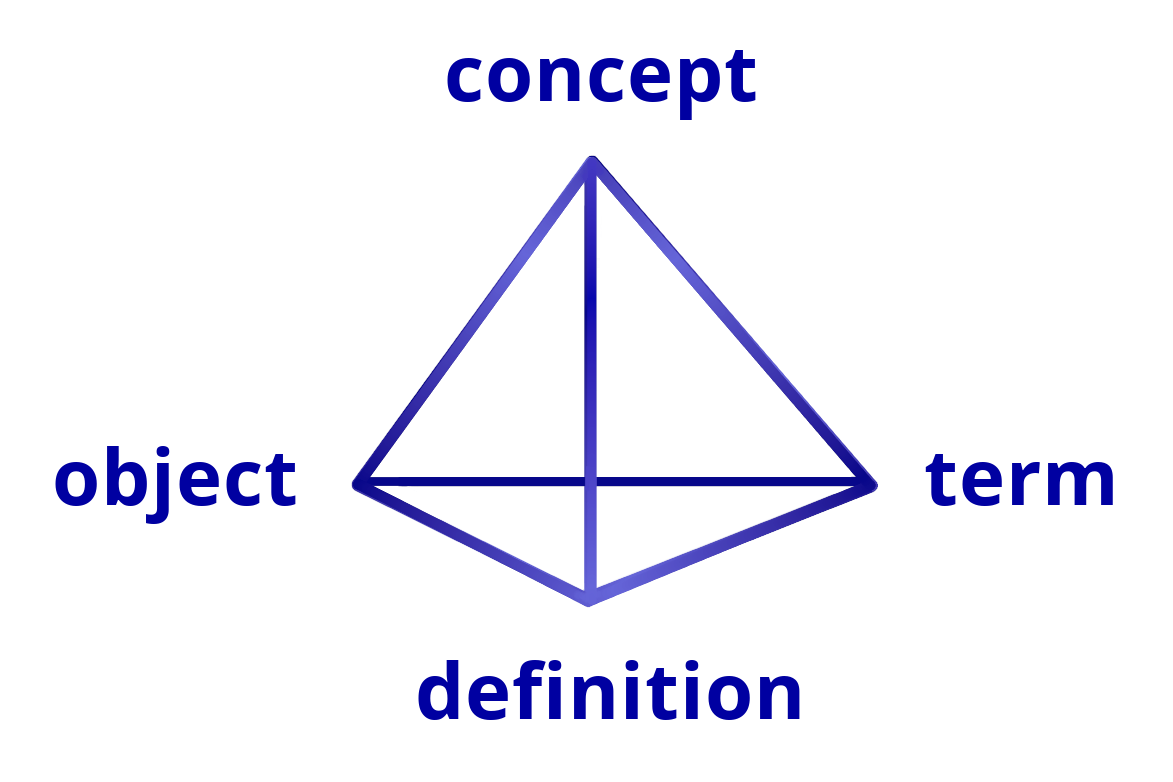For a special field glossary to serve its purpose, it must be prepared carefully and by using the general principles and methods of terminology work. Of these methods, the most central are concept analysis and terminological data management based on knowledge of the structures in terminological data.
Concept analysis
 The theory of terminology and the methods based on it rest on the thinking illustrated by the attached tetrahedron model:
The theory of terminology and the methods based on it rest on the thinking illustrated by the attached tetrahedron model:
In this model, objects are anything perceived or conceived by a human: things, beings, events, processes or properties. Objects can be material (e.g. a car) or immaterial (e.g. higher education) in nature. Concepts, in turn, are units of thought, used by humans to make distinctions in and give structure to the surrounding reality composed of objects.
Terms are designations assigned to concepts for communicative purposes, and definitions are descriptions of the semantic content of the concepts in linguistic form.
In a terminological concept analysis, both the semantic content of concepts and the relations between concepts are examined. In terminology work, three main types of relations between concepts are distinguished: generic, partitive and associative. Concepts and the relations between them may form multidimensional, and complex, concept systems. To visualise concept systems, graphical diagrams are used. In concept diagrams, each type of concept relation is depicted by a specific symbol. Concept analysis also sheds light on the relations between concepts and terms. In this way, concept analysis may help to determine whether two words are synonymous and whether a word refers to more than one concept (cases of homonymy or polysemy).
A concept-oriented working method also provides an excellent basis for comparing concepts and terms between languages. As a result, concept analysis makes it possible to find out the degree to which two terms in different languages are equivalent to each other.